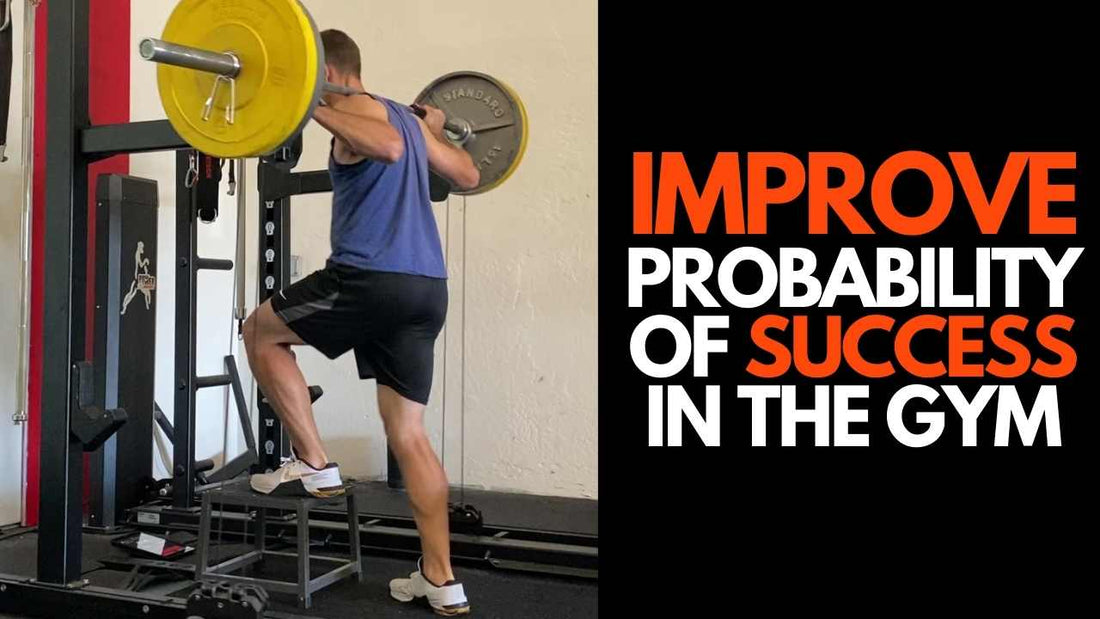Often times I will be asked by athletes about why their strength training is not transferring to improved speed, power, or explosiveness.
What I tend to see is that athletes are performing workouts that confuse the body, sending it divergent signals as to what they want the body to adapt to.
In this article, we will discuss why it is important to send clear, consistent signals to the body, so we can be more efficient with our efforts in achieving the results we seek.
Tip #1 - Avoid Combining High Force & Velocity Work With Endurance Training
One way to improve your strength training is to ensure the qualities you target in your workout are similar, such as targeting strength and power rather than power and endurance in the same workout.
While concurrent training is an effective way to simultaneously improve various physical qualities, workouts themselves should focus primarily on one or two qualities that the athlete is trying to develop.

If an athlete is trying to improve their explosiveness by performing maximal strength and rate of force development work, it would be counterproductive to also include endurance training into the workout.
Training for enhanced explosiveness requires that we target fast twitch muscle fibers, high threshold motor units, and exercise performed with maximal intent. If we then follow that work up with endurance work which activates slow-twitch muscle fiber and demands less forceful outputs from the body, we may negate the effects of the explosive training we performed.
The body will either neglect adapting to one of the types training, or it will adapt minimally to any of it. In the best case scenario, some of the work we performed will be in vain, where only some of the workout has a positive effect. In other cases, the body will not adapt strongly to either stimuli, diluting the effects of the workout and limiting your progress.
Instead, ensure each training session is focused on related physical qualities, such as strength and power, power and speed, or explosiveness and rate of force development. Train endurance and strength endurance on days where these higher output qualities are not the focus of the session, so you can ensure the body knows exactly how you want it to respond to your workouts.
Tip #2 - Pick 1-3 Main Lifts & 1-3 Accessory Exercises Per Workout
Another way to improve your strength training is to limit the number of exercises you perform. Typically, picking one to three main lifts and one to three accessory exercises is adequate.
Your body only has so many adaptive resources available at any given time, and those resources need to be spent wisely if you want to have effective workouts and the ability to recover from those workouts.
If you perform too many exercises in a workout, you will limit the improvement in any one exercise and increase the risk of burning yourself out or overtraining.

Since we want to use strength training to improve both physical outputs as well as movement skills, it is wise to limit the number of exercises so you can get significantly better at the exercises you choose.
Instead of doing squats, deadlifts, RDL's, bench press, overhead press, tricep extensions, planks, Russian twists, and plyometrics in the same workout, break these up into separate workouts or incorporate them in different phases of training.
This will allow you to get more out of each exercise, improve your skills in these exercises at a faster rate, and give you more options down the road to change your training when results begin to stagnate.
Use A Duration Of Effort That Is Relevant For Your Sport
One of the ways that our bodies will interpret stressors of training is through the duration of effort. For example, in sprinting, a 6 second sprint will cause similar adaptations regardless of if you can cover 35 meters or 50 meters in the time frame.
If you go into the gym with the intention of improving power output for the sprints, but you perform sets that take 30 seconds to complete, it is unlikely that you will see improvements in maximal effort, explosive movements which require 6 to 10 seconds of high intensity work.
You need to consider the demands of your sport, and tailor your strength training to match those demands. If you are not specifically training for the physical qualities that are needed for success in your sport, you cannot expect to see your training transfer well to improved performance.
